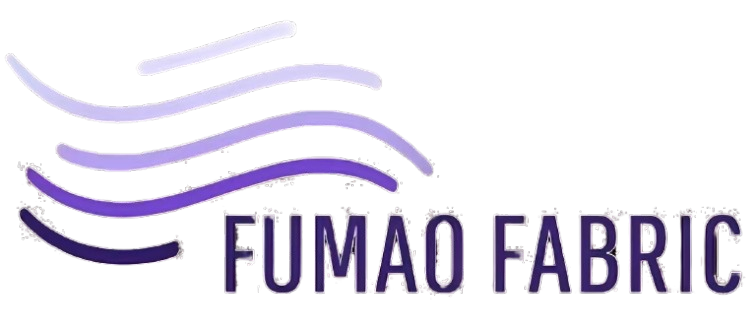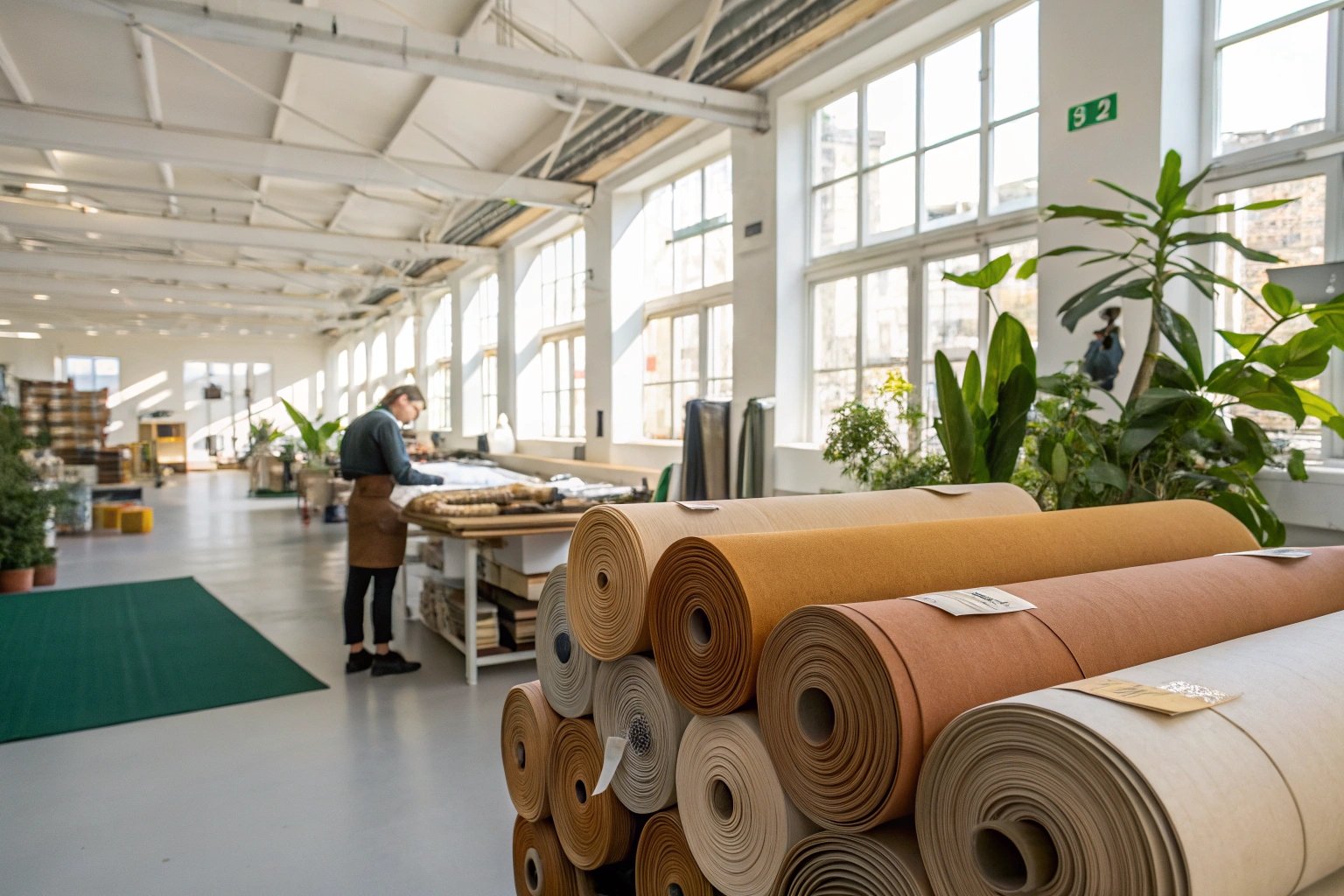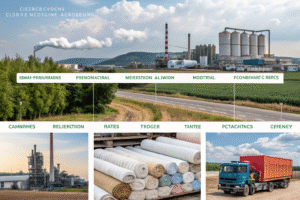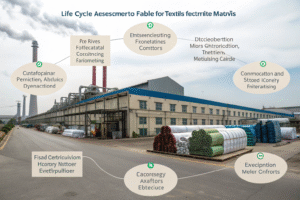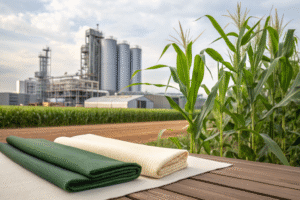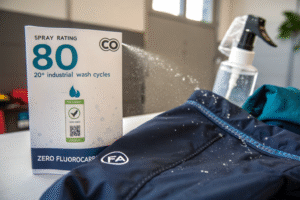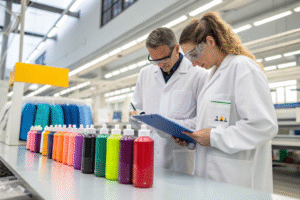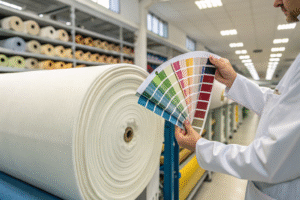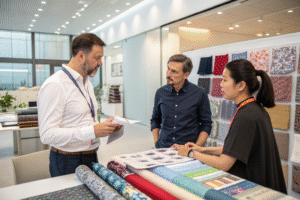Animal leather is losing ground—not just for ethical reasons, but due to environmental and performance concerns. In response, plant-based leather alternatives have surged, driven by sustainability demands, innovation in bio-materials, and changing consumer values. But how far have these materials come, and are they ready for scale?
Plant-based leather innovations—like mycelium, cactus, and pineapple-based textiles—are reshaping the future of ethical fashion and eco-material sourcing.
As fabric suppliers working with both traditional and future-forward materials, we at Fumao Fabric have tracked the rise of these next-gen leathers. In this article, we explore the most exciting breakthroughs and their sourcing potential.
What Are the Most Promising Plant-Based Leather Materials?
Today’s leading plant-based leathers are made using fruit, leaves, roots, or mycelium (mushroom roots), each processed into flexible, durable materials that mimic animal hide.
Among the most widely adopted alternatives are Piñatex, Mylo, Desserto, and apple leather—each offering a blend of sustainability, innovation, and practical utility.
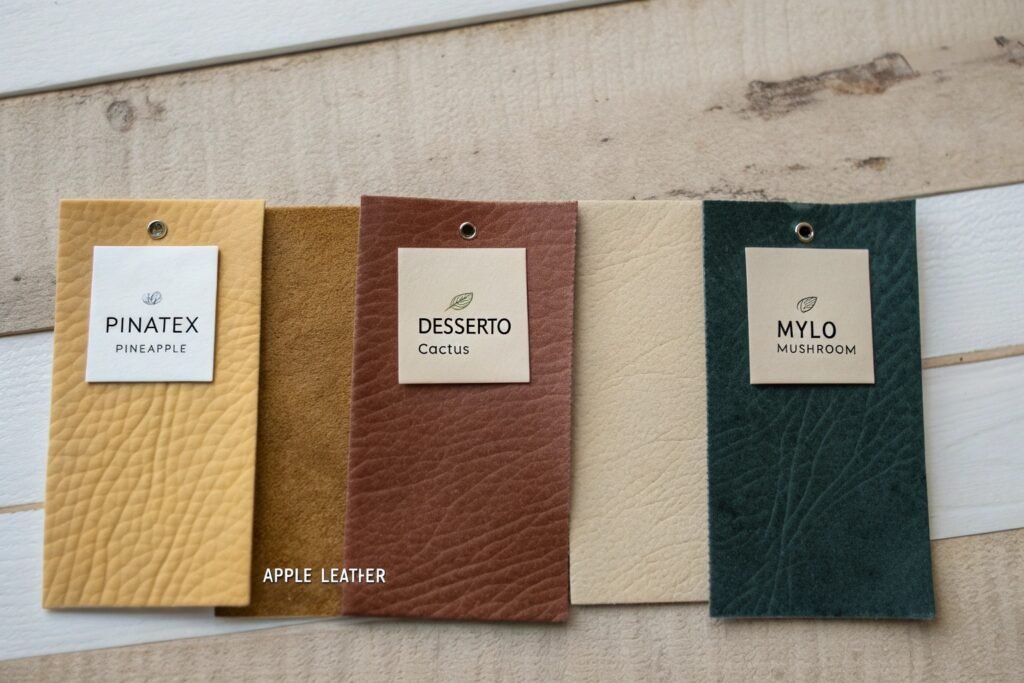
How Is Pineapple Leather (Piñatex) Made?
Piñatex is developed from pineapple leaf fibers—an agricultural waste product—processed into a non-woven mesh that resembles tumbled leather.
The resulting material is:
- Lightweight yet durable
- Partially biodegradable
- Produced with minimal water and chemicals
It’s used by brands like Hugo Boss, H&M, and Nae Vegan Shoes.
What Makes Cactus Leather (Desserto) Unique?
Desserto uses nopal cactus grown in Mexico. After harvesting, the cactus pads are mashed and sun-dried before being mixed with bio-based PU binders.
- No irrigation needed
- Naturally thick, soft texture
- Certified by USDA and GRS
It’s been used in accessories, footwear, and even car interiors (BMW trials).
How Does Mushroom Leather Compare in Feel and Durability?
Fungi-based leather, especially Mylo, has gained global attention due to its near-perfect mimicry of hide grain and softness.
Mylo, developed by Bolt Threads, is made from mycelium—the root system of mushrooms—grown in vertical farms and tanned with eco-friendly agents.
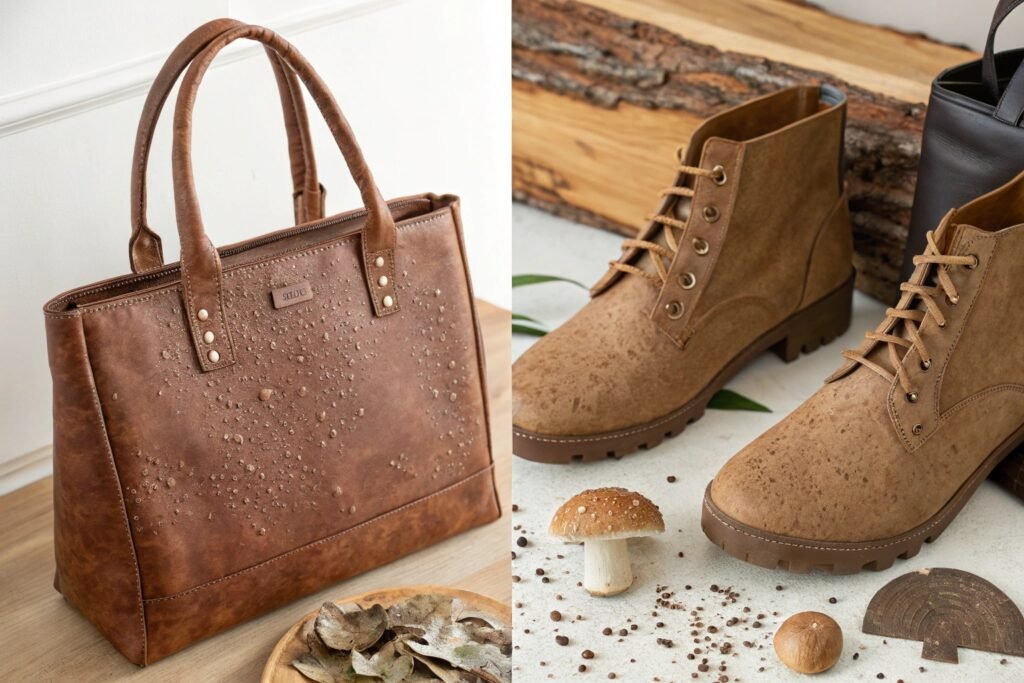
What Are Mycelium Leather’s Advantages?
- Highly scalable in biotech labs
- Customizable thickness and elasticity
- Requires little land, light, or water
Stella McCartney was among the first designers to debut Mylo-based fashion products. Mycelium also degrades more rapidly than synthetic vegan leathers.
Is It Commercially Available Yet?
Yes, but in limited quantities. Bolt Threads has partnered with Adidas, Kering, and Lululemon, though most applications are still in pilot or capsule collections.
We foresee broader availability within 1–2 years as bio-fabrication capacity scales.
What Certifications and Testing Standards Apply?
For fashion brands importing or using plant-based leather, compliance is as critical as the product itself. Buyers should confirm chemical safety, bio-based content, and durability testing.
Key certifications include GRS (Global Recycled Standard), USDA BioPreferred, OEKO-TEX® Standard 100, and ISO abrasion/colorfastness tests.
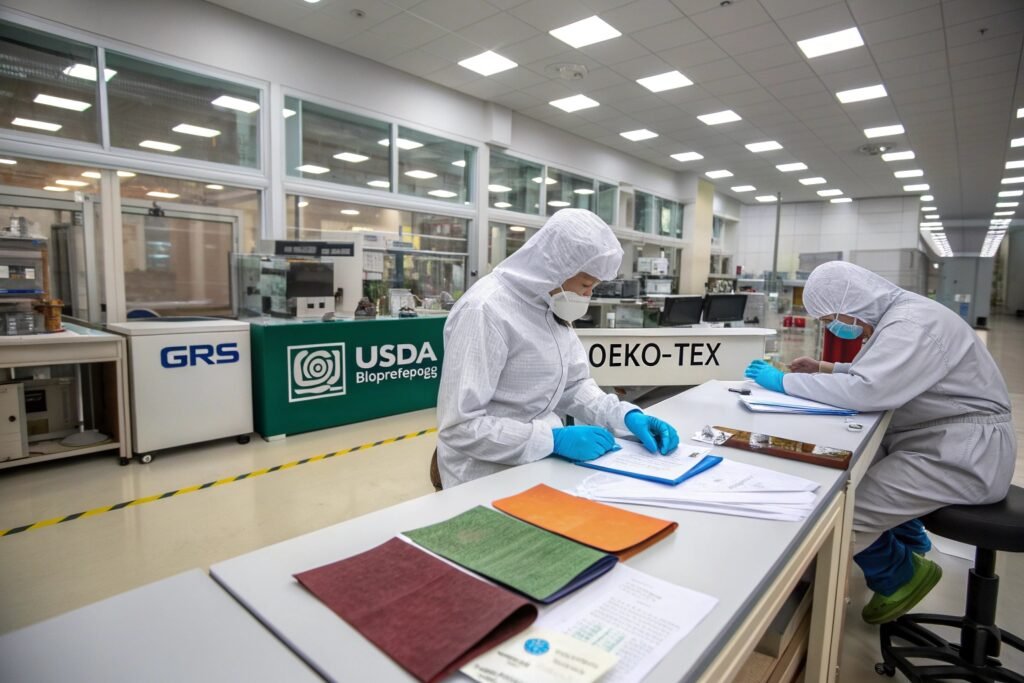
What Tests Ensure Performance?
- ISO 12947 (Martindale abrasion resistance)
- ISO 105-B02 (light fastness)
- EN 388 (tear resistance)
- ISO 17233 (flex testing for soft leather)
Our in-house testing lab in Keqiao supports these tests for rPET and can apply the same process to plant-based leathers sourced through our partners.
Resources like Textile Exchange and OEKO-TEX offer certification guidance for fashion developers.
Are These Materials Vegan and Biodegradable?
Most are vegan (free from animal inputs) but may not be fully biodegradable due to polymer binders. Look for materials with high bio-based content (>70%) and compostable backing layers.
According to Fashion For Good, some mycelium and fruit leathers now achieve 100% bio-content in lab-scale versions.
Where Can Brands Source Plant-Based Leather at Scale?
Sourcing plant-based leather is still evolving. Most mills do not stock it in bulk. Instead, you’ll need to engage with licensed developers or verified distributors.
At Fumao Fabric, we offer indirect sourcing of Piñatex, Desserto, and recycled bio-PU fabrics, backed by testing and MOQ consultation.
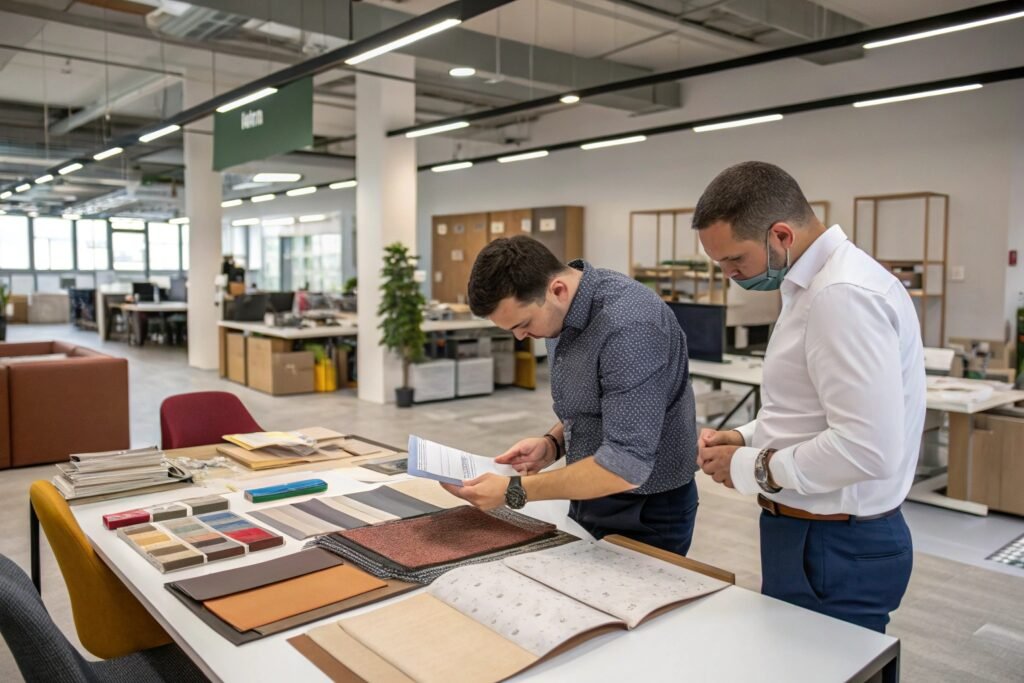
What MOQs and Lead Times Should Buyers Expect?
- Piñatex: MOQ 300–500m, lead time 30–40 days
- Desserto: MOQ 500m+, 4–6 weeks for custom colors
- Mylo: Currently limited to design partnerships
We assist clients with lab dips, compliance sheets, and customs handling via Keqiao’s multimodal export hubs. For updates, check sourcing platforms like Material District.
How to Vet a Plant Leather Supplier?
Request:
- GRS/USDA/OEKO certificates
- Composition breakdown (bio-content %)
- Custom test reports (Martindale, hydrolysis, flex)
- UV/weather data if for outdoor use
Platforms like Material Innovation Initiative regularly publish supplier benchmarks and innovation directories.
Conclusion
Plant-based leather alternatives are no longer a novelty—they are a fast-maturing solution for eco-conscious brands. From cactus to mycelium, the innovation in texture, sustainability, and technical performance is accelerating. By sourcing smart and asking the right questions, your next product line can combine ethics with aesthetics. At Fumao Fabric, we’re here to support your journey with verified partners, low-MOQ access, and expert guidance.
